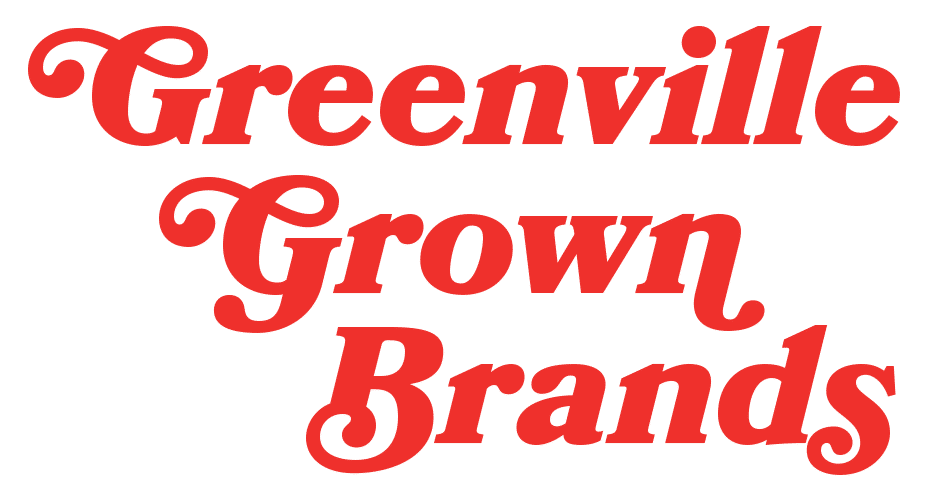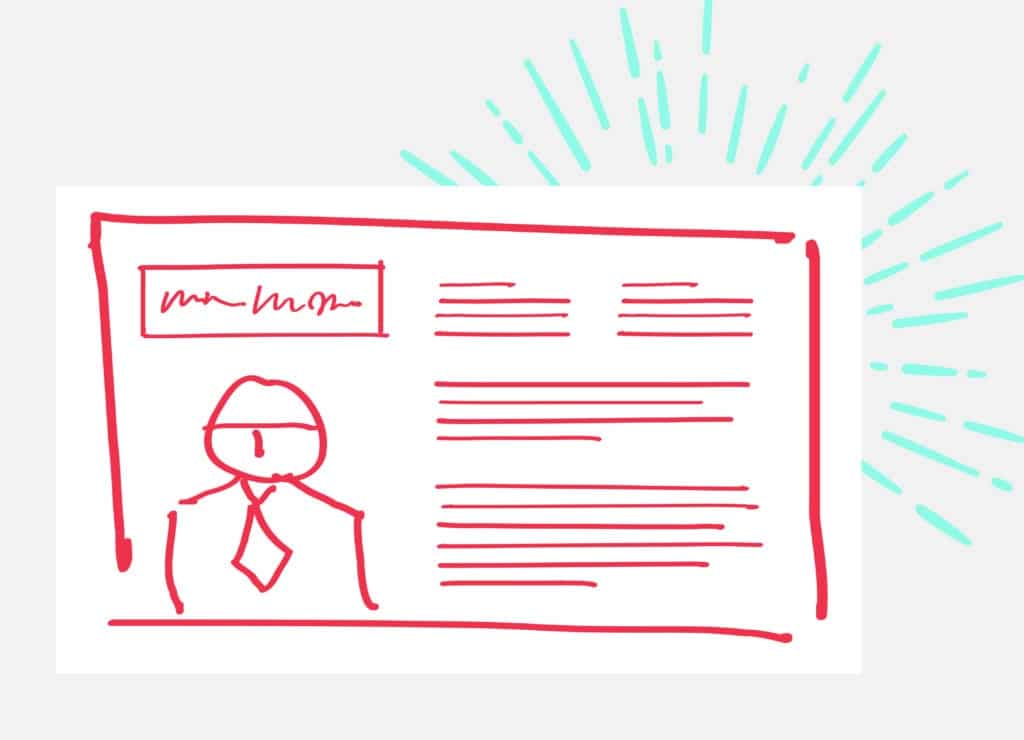As a follow up to our recent article on UX, this article takes a closer look at a popular tool in the world of marketing and UX: personas. We’ll explore why they’re so powerful for any business working with customers, which basically means all businesses should pay attention to the power of personas.
Invented in the mid-90s and widely used in the design world, personas have gained traction as a valuable tool for helping teams really understand and create solutions for their users and customers. Their originator was a software engineer named Alan Cooper who found that the best way to design his upcoming project was to interview real users. He then translated his research findings into personas (a process that he refined over nearly a decade), which he found was dramatically more effective than simply sharing general target audience information to help his clients understand who they were designing for.
So what is a persona? It’s a fictional but realistic portrayal of a target user for your product or customer of your business. Each persona represents a unique audience; some projects may have more than one persona. They come to life in detailed ‘live’ documents, meaning they can – and should – be updated throughout the life of a project as more information is uncovered (don’t worry, we’ll get into some examples). They typically include information such as the following:
- Demographic/biographical information
- Daily challenges
- Personal goals
- Informative quotes
- Motivations
- Cultural backgrounds or influences
- Device usage patterns
In our world of marketing, we would typically focus on the marketing persona, which is just one ‘flavor’ of personas that helps us as marketers determine which types of customers might be receptive to particular marketing techniques, messages, etc. They typically include but are not limited to the following information:
- Demographic/biographical information
- Buying habits and motivations
- Media usage habits
- Marketing messaging reception
Personas enable marketers and designers to focus on a manageable and memorable group of characters over the course of the project. It brings the data about an audience to life. It seems that as humans we hone in better when we’re able to think about a specific ‘somebody’ rather than a generic ‘everybody.’
So enough with the theory – what does a persona look like? Well, it’s typically a single-page document, but, in terms of design, it can take many shapes. It’s less about the format and more about the fundamental understanding of one’s audience. With that being said, the designer of the persona document should strive to make it skimmable and include visual hierarchy so the various teams that will interact with the document can find relevant information quickly.
Here are some examples of effective personas, curated from the interwebs:
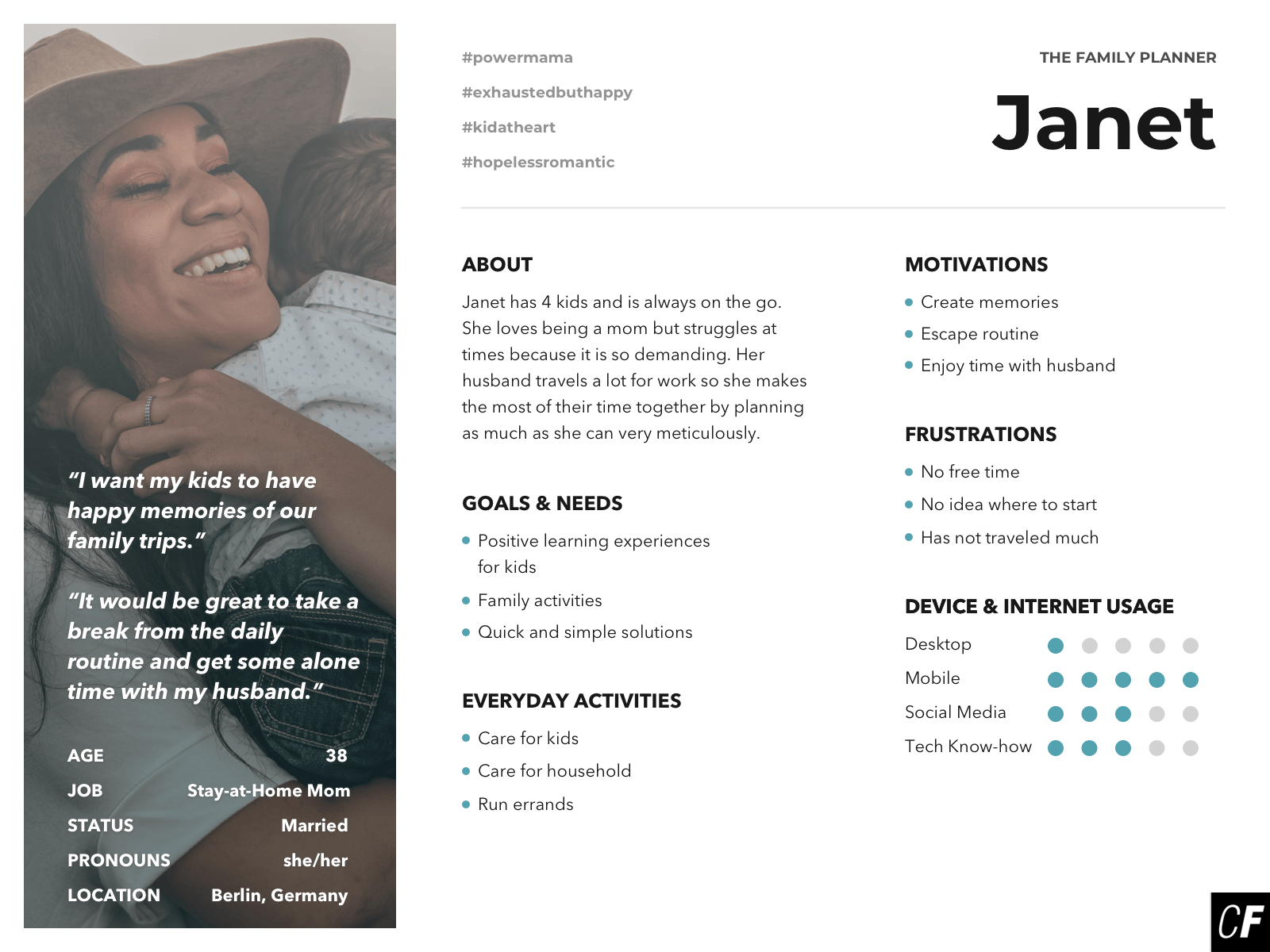
Credit: Career Foundry
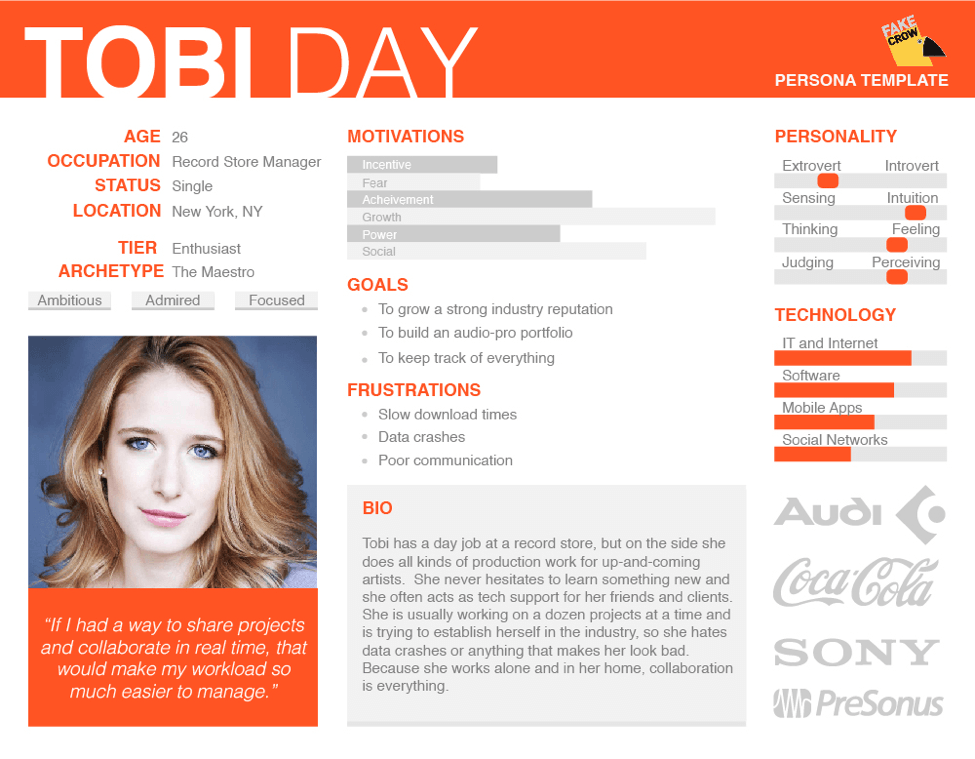
Credit: Alexa Blog
Mailchimp, the global email software provider, took it a step further and created eye-catching posters to help align everyone with their personas. These went on to win several awards!

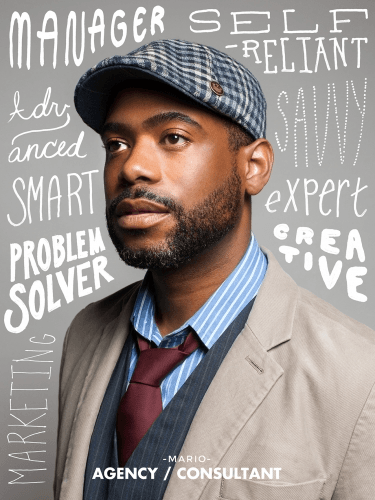
So now that you’ve seen examples of personas, you may be wondering how to create a document like this. While there are a plethora of templates available online, and you could create a persona in almost any software, there are a handful of things to keep in mind while creating your document:
Formatting:
- Try to stick to a single page so it can be easily printed and distributed.This also forces you to include only the most relevant information
- Keep it simple – a two- or three-column approach with headers for each section of information works well
- Be sure to find a convincing image to represent your persona, and use bullet points or infographics where possible versus paragraphs of text
- Tell a story with your design – the persona should be memorable for your team
Content to consider including:
- Name, age, gender and a photo
- Demographic information, such as location, education, ethnicity, family status and occupation
- Needs and goals
- Behaviors (and this section can include feelings towards your product, service or industry)
- Quotes from the persona’s perspective – to better illustrate special challenges, needs or motivations in the persona’s life (example: “I’m always looking for products that are good for the environment”)
It may seem like stating the obvious, but it’s worth noting that a good persona is only as good as the research it’s based on. Try to avoid making assumptions to fill in the gaps and ensure your persona is representing a real audience as best as you can. This means ensuring you have planned out enough time to properly create this document or documents. While it may seem like a lot of time invested up front, the end result is worth the effort.
So now that we understand what personas are and how you can begin to create one for your own business, perhaps you still need convincing of the value they add to the marketing and UX process. Here are a few things to consider:
- Personas help teams establish empathy with users. They allow teams to see projects through their customers’ eyes and make decisions with the persona’s needs and goals in mind.
- Personas can help teams prioritize elements of a project – knowing what they need can influence what is addressed first.
- For stakeholders or clients not as directly involved in the project, personas allow design teams to better present their research in an informative and memorable way.
- Personas enable teams to make decisions based on real data from real users. The value of this one can’t be overstated because it’s hard to argue with data from real customers.
Although personas are incredibly powerful tools, like our title suggests, they are not enough on their own to provide a full understanding of your audience. However, when paired with other tools like Journey Maps or storyboards, for example, they can truly help round out your research efforts and bring clarity to your design goals. Knowing who you’re talking to and who you’re designing for is always going to lead to stronger, more effective work.
If the prospect of this new tool has you excited, check out these resources to learn more or get in touch with us!
- A step-by-step guide to creating personas
- Editable template
- Some great examples for inspiration

